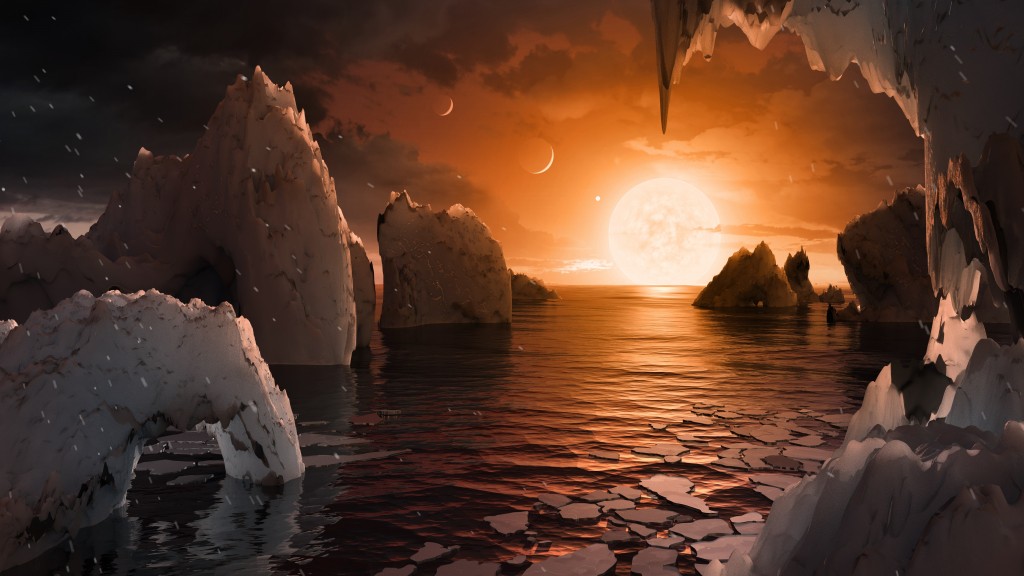The discovery of a new Earth-like planet could shed further light on what makes a planet habitable

A relatively neighbourly 378 trillion kilometres from Earth.

In an exciting breakthrough for astronomy and the search for extraterrestrial life, a team of international scientists has announced the discovery of Gliese 12 b, a temperate, Earth-sized exoplanet just 40 light-years away — a relatively neighbourly 378 trillion kilometres from Earth.
Researchers from across the world, including key support from researchers at McGill University and Western University worked collaboratively on the hunt for Gliese 12 b within InfraRed Doppler Subaru Strategic Program (IRD-SSP) which searches for habitable zone planets around red dwarfs.
The international team detected the planet’s presence using a combination of advanced telescopes and observational techniques and its discovery presents exciting opportunities to gain a deeper understanding of the worlds beyond our own solar system.
Planet around a red dwarf
Gliese 12 b orbits around a central star named Gliese 12, which is a type of star known as a red dwarf. Red dwarfs are smaller, cooler and more abundant than the G-Type stars like our Sun.
The planets orbiting red dwarf stars are prime candidates in the search for life beyond Earth. Considerable effort has been made to find planets orbiting red dwarfs, as terrestrial worlds are easier to detect around these stars, compared to more massive stars like our Sun.
Related: Webb meets the 7 intriguing exoplanets of TRAPPIST-1
Gliese 12 is one of two red dwarf stars — the other being TRAPPIST-1 — within 100 light-years of Earth that play host to Earth-sized planets with relatively minimal stellar radiation. TRAPPIST-1’s strong activity — such as high energy stellar flares — likely disrupts the habitability of its planets, as recent observations suggest TRAPPIST-1 b and c have almost no atmosphere.
Breaking space news, the latest updates on rocket launches, skywatching events and more!
Highly active stars exhibit more frequent and intense flares and emit life-threatening high-energy radiation than inactive stars. In contrast, Gliese 12 is an unusually inactive red dwarf, meaning its planets face much less harmful conditions.
Barely balmy starlight
What makes Gliese 12 b particularly intriguing is its size and location. It is roughly the same size as Earth, suggesting it may have similar makeup and surface environment. However, more observations and modelling are needed to confirm this.
Gliese 12 b’s location near the inner edge of its star’s habitable zone makes it especially interesting. The habitable zone, often referred to as the “Goldilocks zone,” is the region around a star where conditions are just right for liquid water to exist on a planet’s surface. Since water is essential for life as we know it, finding a planet around this zone is a big step in the search for life.
Gliese 12 b receives just enough starlight to be slightly closer than the inner edge of the habitable zone for red dwarfs. However, the actual presence of liquid water depends on its atmosphere and surface conditions. From another perspective, the amount of starlight it receives is between what Earth and Venus get from the Sun. Further study of Gliese 12 b could shed light on the key differences between a habitable Earth and an inhospitable Venus.
A closer look
Another exciting aspect of Gliese 12 b is that its relatively close proximity to Earth allows for more detailed study of its surface environment.
One particularly useful method for studying Gliese 12 b, which isn’t possible for non-transiting planets, is atmospheric transmission spectroscopy. This technique involves analyzing the starlight that passes through a planet’s atmosphere during transit. By studying the changes in the light’s spectra, scientists can infer the composition of the planet’s atmosphere, identifying gases like oxygen, water, methane and carbon dioxide, which could indicate biological processes.
The discovery of Gliese 12 b is a stepping stone towards finding potentially habitable planets and understanding the conditions that make life possible. Current and future telescopes, such as the James Webb Space Telescope and ground-based extremely large telescopes, will play crucial roles in further investigations. These instruments will allow scientists to conduct more detailed studies of Gliese 12 b’s atmosphere and surface conditions.
The discovery of Gliese 12 b, a nearby possibly habitable exoplanet, is a thrilling development in the quest to find Earth-like planets and, potentially, extraterrestrial life. As we continue to explore the cosmos, each new discovery brings us closer to answering the age-old question: Are we alone in the universe?
For now, Gliese 12 b stands as a beacon of hope and curiosity, inviting us to learn more about the possibilities that lie beyond our own solar system.

Dr. Vigneshwaran Krishnamurthy is a distinguished astronomer and aerospace engineer currently serving as a Postdoctoral Researcher at the Trottier Space Institute at McGill University, Montreal. His work primarily focuses on the atmospheric characterization of exoplanets using advanced ground and space-based telescopes, contributing significantly to our understanding of planetary atmospheres and their evolution. Dr. Krishnamurthy's research has earned him prestigious accolades, including the NASA SEEC grant and the President Shankar Dhayal Sharma gold medal, reflecting his exceptional contributions to the field of astrophysics.

